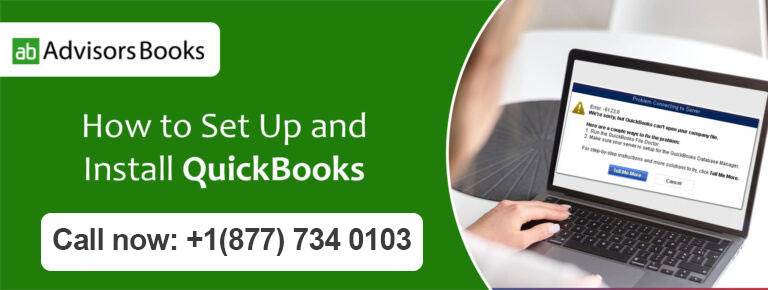Step-by-Step Guide: How to Set Up and Install QuickBooks

Introduction:
Setting up and installing QuickBooks is a crucial step towards efficient financial management for your business. Whether you’re a small business owner, a freelancer, or a self-employed professional, this step-by-step guide will walk you through the process of setting up and installing QuickBooks, ensuring that you start off on the right foot. Let’s dive in!
Step 1: Choosing the Right QuickBooks Version:
QuickBooks offers both online and desktop versions. Consider your specific needs, preferences, and budget to determine which version is best suited for your business. QuickBooks Online allows easy access from anywhere with an internet connection, while QuickBooks Desktop provides more robust features and is ideal for businesses with complex accounting requirements.
Step 2: Gathering Required Information:
Before you begin the installation process, gather the necessary information, including your business details, tax identification numbers, financial institution details, and any existing financial data you wish to import into QuickBooks. This preparation will streamline the setup process.
Step 3: Downloading QuickBooks:
For QuickBooks Desktop, visit the official Intuit website and select the appropriate version. Click on the “Download” button and save the installation file to your computer. If you have purchased QuickBooks Online, simply access it through a web browser.
Step 4: Installing QuickBooks Desktop:
If you’re installing QuickBooks Desktop, locate the downloaded installation file and double-click to launch the installation wizard. Follow the on-screen instructions, agree to the license agreement, and select the installation type (typical or custom). Choose the installation location and initiate the installation process. Once the installation is complete, proceed to the next step.
Step 5: Creating a QuickBooks Account:
If you’re using QuickBooks Online, you’ll need to create a new account. Visit the QuickBooks Online website and click on the “Sign Up” or “Get Started” button. Follow the prompts to provide your business information, select a subscription plan, and create your login credentials.
Step 6: Setting Up Your Company Profile:
After installing QuickBooks Desktop or creating a QuickBooks Online account, you’ll need to set up your company profile. Provide essential details such as your company name, address, industry, and fiscal year start date. Additionally, set up your chart of accounts, which categorizes your financial transactions.
Step 7: Importing Existing Financial Data (Optional):
If you have existing financial data in a different accounting software or spreadsheet, you can import it into QuickBooks. Follow the instructions provided by QuickBooks to ensure a smooth and accurate transfer of your data. This step will save you time and effort in manual data entry.
Step 8: Connecting Bank Accounts:
To track your income and expenses seamlessly, connect your bank accounts and credit cards to QuickBooks. This allows for automatic import of transactions and simplifies bank reconciliation. QuickBooks provides clear instructions on how to connect your financial institutions securely.
Step 9: Customizing Preferences:
QuickBooks offers various customization options to align the software with your specific business needs. Set your preferences for invoices, estimates, sales receipts, and reports. Customize your financial statements and specify your tax settings based on your country and region.
Step 10: Getting Familiar with QuickBooks:
Congratulations! You’ve successfully set up and installed QuickBooks. Take some time to explore the software and get familiar with its features and functionalities. QuickBooks
offers extensive help resources, including tutorials, guides, and a user community, to assist you in maximizing the potential of the software.
Conclusion:
Setting up and installing QuickBooks is a foundational step towards effective financial management. By following this step-by-step guide, you’ve established a solid foundation for accurate bookkeeping, streamlined invoicing, and insightful reporting.
Source: Intuit